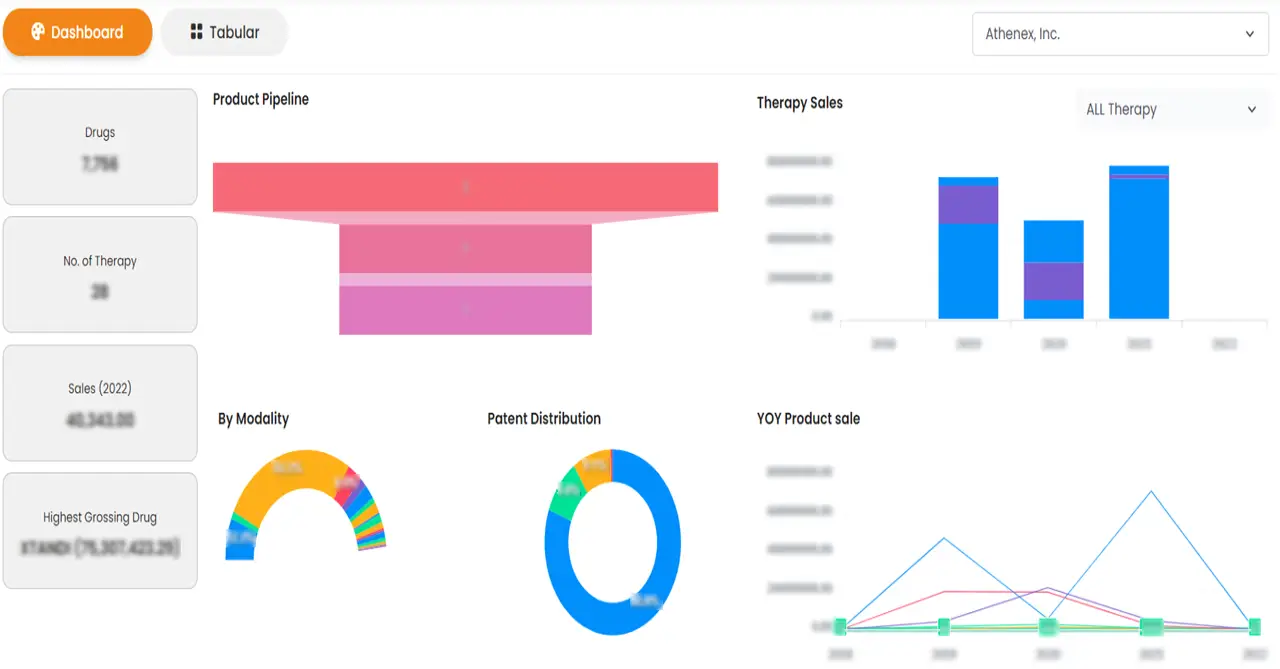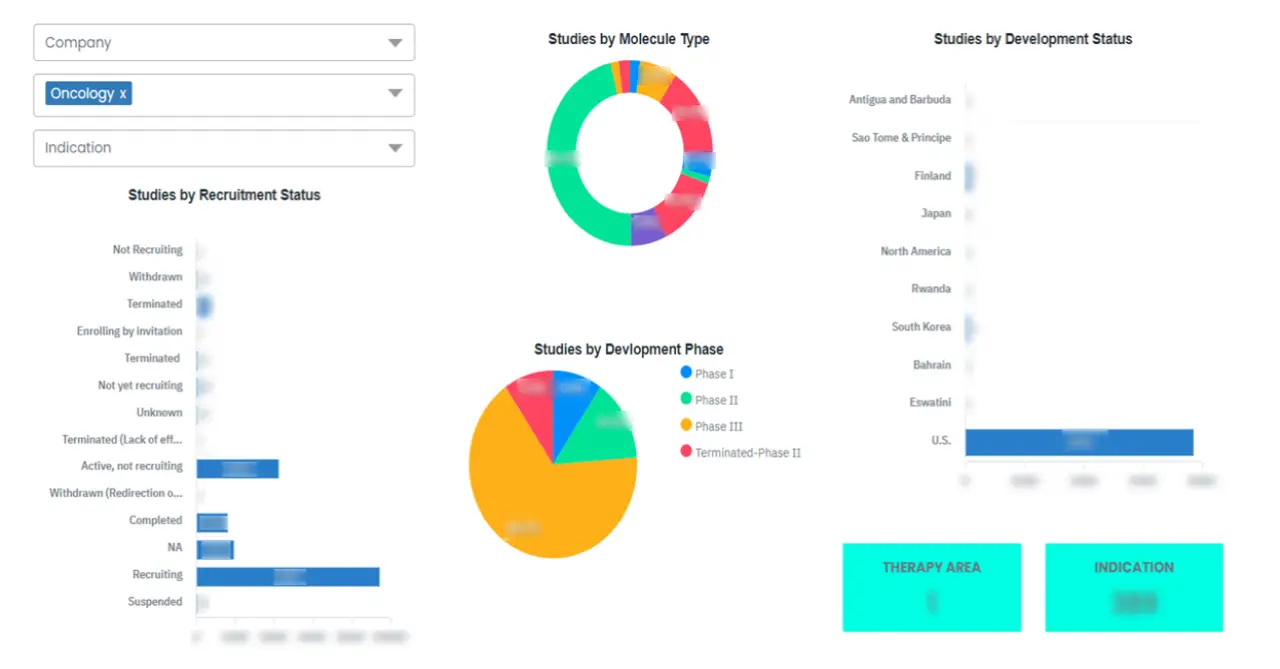世界のデニス・ドラシュ症候群市場
Market Size in USD Billion
CAGR :
% 
 USD
324.27 Million
USD
516.84 Million
2023
2031
USD
324.27 Million
USD
516.84 Million
2023
2031
| 2024 –2031 | |
| USD 324.27 Million | |
| USD 516.84 Million | |
|
|
|
|
世界のデニス・ドラッシュ症候群市場、診断(臨床検査、画像検査、腎生検、その他)、治療(腎代替療法、腎移植、投薬、その他)、発症年齢(小児期、青年期、乳児期、新生児)、投与経路(経口、非経口、その他)、エンドユーザー(病院、専門クリニック、在宅ケア、その他)、流通チャネル(病院薬局、小売薬局、オンライン薬局、その他)別 – 2031年までの業界動向と予測。
デニス・ドラシュ症候群の市場分析と規模
デニス・ドラッシュ症候群 (DDS) 市場は、WT1 遺伝子変異との関連性から、遺伝子研究の重要な焦点となっています。これらの変異を理解することで、腎臓の発達と癌形成、特にウィルムス腫瘍に関する知識が深まります。DDS における遺伝子研究は、標的診断テスト、潜在的な遺伝子治療、および個別化治療戦略の開発に役立ちます。市場には、診断精度と治療結果の向上を目指す遺伝子検査会社、バイオテクノロジー企業、研究機関が含まれます。DDS 研究の進歩は、腎臓学、腫瘍学、および遺伝カウンセリングにおける幅広い応用に貢献しています。
Clinical Kidney Journal の最近の研究では、デニス・ドラッシュ症候群 (DDS) に関する遺伝子研究の重要性が強調されています。この研究では、すべての患者が末期腎疾患に進行していることが判明し、早期発見と特別な治療の必要性が強調されています。このような研究から得られる知見は、標的療法の開発に役立ち、患者の長期的な転帰を改善することができます。
世界のデニス・ドラッシュ症候群の市場規模は、2023年に3億2,427万米ドルと評価され、2024年から2031年の予測期間中に6.00%のCAGRで成長し、2031年には5億1,684万米ドルに達すると予測されています。市場価値、成長率、セグメンテーション、地理的範囲、主要プレーヤーなどの市場シナリオに関する洞察に加えて、データブリッジ市場調査によってまとめられた市場レポートには、詳細な専門家の分析、患者の疫学、パイプライン分析、価格分析、規制の枠組みも含まれています。
レポートの範囲と市場セグメンテーション
|
レポートメトリック |
詳細 |
|
予測期間 |
2024-2031 |
|
基準年 |
2023 |
|
歴史的な年 |
2022 (2016~2021年にカスタマイズ可能) |
|
定量単位 |
売上高(10億米ドル)、販売数量(個数)、価格(米ドル) |
|
対象セグメント |
診断(臨床検査、画像検査、腎生検、その他)、治療(腎代替療法、腎移植、投薬、その他)、発症年齢(小児期、青年期、乳児期、新生児期)、投与経路(経口、非経口、その他)、エンドユーザー(病院、専門クリニック、在宅ケア、その他)、流通チャネル(病院薬局、小売薬局、オンライン薬局、その他) |
|
対象国 |
北米では米国、カナダ、メキシコ、ヨーロッパではドイツ、フランス、英国、オランダ、スイス、ベルギー、ロシア、イタリア、スペイン、トルコ、その他のヨーロッパ、ヨーロッパでは中国、日本、インド、韓国、シンガポール、マレーシア、オーストラリア、タイ、インドネシア、フィリピン、アジア太平洋地域 (APAC) ではその他のアジア太平洋地域 (APAC)、中東およびアフリカ (MEA) の一部としてサウジアラビア、UAE、南アフリカ、エジプト、イスラエル、中東およびアフリカ (MEA) の一部としてその他の中東およびアフリカ (MEA)、南米の一部としてブラジル、アルゼンチン、その他の南米 |
|
対象となる市場プレーヤー |
F. ホフマン・ラ・ロシュ社(スイス)、マイラン社(米国)、テバ製薬工業社(アイルランド)、サノフィ社(フランス)、ファイザー社(米国)、グラクソ・スミスクライン社(英国)、ノバルティス社(スイス)、メルク社(米国)、アラガン社(アイルランド)、アストラゼネカ社(英国)、ジョンソン・エンド・ジョンソン社(米国)、ヒクマ・ファーマシューティカルズ社(英国)、ブリストル・マイヤーズスクイブ社(米国)、バイエル社(ドイツ)、ベーリンガーインゲルハイム社(ドイツ)、ドクター・レディーズ・ラボラトリーズ社(インド)、ギリアド・サイエンシズ社(米国)、アムジェン社(米国)、イーライリリー社(米国)、アッヴィ社(米国)、ルピン社(インド)、アラガン社(アイルランド) |
|
市場機会 |
|
市場の定義
デニス・ドラシュ症候群は、腎臓の異常を特徴とするまれな遺伝性疾患で、早期に腎臓病を発症することが多く、性器の異常や、腎臓がんの一種であるウィルムス腫瘍の発症リスクの増加につながります。この疾患は、WT1 遺伝子の変異によって引き起こされます。
デニス・ドラッシュ症候群の市場動向
ドライバー
- デニス・ドラッシュ症候群(DDS)の発生率上昇による治療の需要の高まり
デニス・ドラッシュ症候群 (DDS) は、重度の腎臓疾患、性器の不明確化、ウィルムス腫瘍の発症素因につながることが多く、早期かつ集中的な医療介入が必要になります。認知度と診断能力が向上するにつれて、より多くの症例が特定され、遺伝子治療、外科的介入、長期の医療管理などの専門的な治療の需要が高まっています。医療提供者と製薬会社は、この患者層の高まるニーズを満たすために研究開発にさらに投資しており、それによって DDS 治療市場が推進されています。
- 医療費の増加によりデニス・ドラシュ症候群の治療の需要が高まる
Healthcare budgets increases globally due to which more resources are allocated towards the diagnosis and management of rare genetic disorders such as DDS. This enhances access to advanced medical technologies and specialized treatments, leading to better patient outcomes. Additionally, increased funding supports research and development of new therapies, thereby expanding the market for DDS treatment options. Enhanced healthcare spending also facilitates broader healthcare coverage and patient support programs, further driving demand for DDS treatments.
Opportunities
- Increasing Research and Development Activities Improves Unmet Medical Needs
Fostering innovation and progress in understanding the genetic basis and treatment options for this rare condition. Advancements in genetic technologies and molecular biology techniques enable deeper insights into the underlying mechanisms of DDS, leading to the identification of potential therapeutic targets. With growing interest and investment from both academia and pharmaceutical companies, there is a greater focus on developing targeted therapies and personalized treatment approaches for DDS. These R&D efforts hold promise for improved outcomes and quality of life for individuals affected by DDS, driving market growth and addressing unmet medical needs in this rare disease space.
- Growing Regulatory Incentives Supports the Denys-Drash Syndrome
It offers pharmaceutical companies benefits such as extended market exclusivity, tax credits, and reduced regulatory fees, incentivizing investment in research and development for rare diseases such as DDS. These incentives encourage companies to allocate resources toward understanding the underlying genetic mechanisms of DDS and developing targeted therapies. Fostering innovation and investment in the field, regulatory incentives play a pivotal role in driving progress towards effective treatments for DDS, ultimately improving outcomes for affected individuals.
Restraints/Challenges
- High Development Costs Limits the Treatment of Denys-Drash Syndrome
Developing treatments for ultra-rare disorders such as DDS involves substantial investment in research, clinical trials, and manufacturing processes. The limited patient population further exacerbates the cost-effectiveness challenges, as the potential return on investment may be lower compared to more prevalent conditions. Pharmaceutical companies face financial barriers in justifying the allocation of resources towards DDS drug development, hindering progress towards effective therapies. This constraint underscores the need for innovative funding models, public-private partnerships, and regulatory incentives to incentivize investment and accelerate the development of treatments for DDS.
- Lack of Comprehensive Understanding of Denys-Drash Syndrome (DDS)
Despite advancements in genetic research, many aspects of DDS, including disease progression, genotype-phenotype correlations, and the underlying molecular mechanisms, remain poorly understood. This limited understanding hampers the development of targeted therapies and personalized treatment approaches. The rarity of DDS makes it challenging to conduct large-scale studies and accumulate sufficient clinical data for robust analysis.
This market report provides details of new recent developments, trade regulations, import-export analysis, production analysis, value chain optimization, market share, impact of domestic and localized market players, analyses opportunities in terms of emerging revenue pockets, changes in market regulations, strategic market growth analysis, market size, category market growths, application niches and dominance, product approvals, product launches, geographic expansions, technological innovations in the market. To gain more info on the market contact Data Bridge Market Research for an Analyst Brief, our team will help you take an informed market decision to achieve market growth.
Denys-Drash Syndrome Market Scope
The market is segmented on the basis of age of onset, route of administration, diagnosis, treatment, end-users and distribution channel. The growth amongst these segments will help you analyze meagre growth segments in the industries and provide the users with a valuable market overview and market insights to help them make strategic decisions for identifying core market applications.
Age of Onset
- Childhood
- Adolescent
- Infancy
- Neonatal
Route of Administration
- Oral
- Parenteral
- Others
Diagnosis
- Laboratory Tests
- Imaging Tests
- Ultrasound
- Others
- Kidney Biopsy
- Others
Treatment
- Renal Replacement Therapy
- Kidney Transplantation
- Medication
- Others
End-Users
- Hospitals
- Specialty Clinics
- Homecare
- Others
Distribution Channel
- Hospital Pharmacy
- Retail Pharmacy
- Online Pharmacy
- Others
Denys-Drash Syndrome Market Regional Analysis/Insights
The market is analysed and market size insights and trends are provided by country, age of onset, route of administration, diagnosis, treatment, end-users and distribution channel as referenced above.
The countries covered in the market report are U.S., Canada and Mexico in North America, Germany, France, U.K., Netherlands, Switzerland, Belgium, Russia, Italy, Spain, Turkey, Rest of Europe in Europe, China, Japan, India, South Korea, Singapore, Malaysia, Australia, Thailand, Indonesia, Philippines, Rest of Asia-Pacific (APAC) in the Asia-Pacific (APAC), Saudi Arabia, U.A.E, South Africa, Egypt, Israel, Rest of Middle East and Africa (MEA) as a part of Middle East and Africa (MEA), Brazil, Argentina and Rest of South America as part of South America
North America dominates the market with significant market share and revenue, poised to maintain its dominance in the forecast period. The region's growth is fueled by increasing syndrome prevalence and rising healthcare spending. Moreover, the market benefits from the strong presence of major key players, contributing to its accelerated growth in North America.
Asia-Pacific is expected for significant growth, driven by substantial advancements in healthcare infrastructure. Increasing government initiatives aimed at bolstering healthcare services will be key catalysts, further accelerating the region's market expansion. This growth trajectory underscores a promising landscape for healthcare development, with rising investments and strategic initiatives poised to reshape the industry across the Asia-Pacific region.
The country section of the report also provides individual market impacting factors and changes in regulation in the market domestically that impacts the current and future trends of the market. Data points such as down-stream and upstream value chain analysis, technical trends and porter's five forces analysis, case studies are some of the pointers used to forecast the market scenario for individual countries. Also, the presence and availability of global brands and their challenges faced due to large or scarce competition from local and domestic brands, impact of domestic tariffs and trade routes are considered while providing forecast analysis of the country data.
Healthcare Infrastructure Growth Installed base and New Technology Penetration
The market also provides you with detailed market analysis for every country growth in healthcare expenditure for capital equipment, installed base of different kind of products for market, impact of technology using life line curves and changes in healthcare regulatory scenarios and their impact on the market. The data is available for historic period 2016-2021.
Competitive Landscape and Denys-Drash Syndrome Market Analysis
The Denys-Drash syndrome market competitive landscape provides details by competitor. Details included are company overview, company financials, revenue generated, market potential, investment in research and development, new market initiatives, global presence, production sites and facilities, production capacities, company strengths and weaknesses, product launch, product width and breadth, application dominance. The above data points provided are only related to the companies' focus related to Denys-Drash syndrome market.
Some of the major players operating in the Denys-Drash syndrome market are:
- F. Hoffmann-La Roche Ltd. (Switzerland)
- Mylan N.V. (U.S.)
- Teva Pharmaceutical Industries Ltd. (Ireland)
- Sanofi (France)
- Pfizer Inc. (U.S.)
- GlaxoSmithKline plc (U.K.)
- Novartis AG (Switzerland)
- Merck & Co., Inc. (U.S.)
- Allergan (Ireland)
- AstraZeneca (U.K.)
- Johnson & Johnson Private Limited (U.S.)
- Hikma Pharmaceuticals PLC (U.K.)
- Bristol-Myers Squibb Company (U.S.)
- バイエルAG(ドイツ)
- ベーリンガーインゲルハイムインターナショナルGmbH(ドイツ)
- ドクター・レディーズ・ラボラトリーズ社(インド)
- ギリアド・サイエンシズ(米国)
- アムジェン社(米国)
- イーライリリー・アンド・カンパニー(米国)
- アッヴィ社(米国)
- ルピナス(インド)
- アラガン(アイルランド)
SKU-
世界初のマーケットインテリジェンスクラウドに関するレポートにオンラインでアクセスする
- インタラクティブなデータ分析ダッシュボード
- 成長の可能性が高い機会のための企業分析ダッシュボード
- カスタマイズとクエリのためのリサーチアナリストアクセス
- インタラクティブなダッシュボードによる競合分析
- 最新ニュース、更新情報、トレンド分析
- 包括的な競合追跡のためのベンチマーク分析のパワーを活用
調査方法
データ収集と基準年分析は、大規模なサンプル サイズのデータ収集モジュールを使用して行われます。この段階では、さまざまなソースと戦略を通じて市場情報または関連データを取得します。過去に取得したすべてのデータを事前に調査および計画することも含まれます。また、さまざまな情報ソース間で見られる情報の不一致の調査も含まれます。市場データは、市場統計モデルと一貫性モデルを使用して分析および推定されます。また、市場シェア分析と主要トレンド分析は、市場レポートの主要な成功要因です。詳細については、アナリストへの電話をリクエストするか、お問い合わせをドロップダウンしてください。
DBMR 調査チームが使用する主要な調査方法は、データ マイニング、データ変数が市場に与える影響の分析、および一次 (業界の専門家) 検証を含むデータ三角測量です。データ モデルには、ベンダー ポジショニング グリッド、市場タイムライン分析、市場概要とガイド、企業ポジショニング グリッド、特許分析、価格分析、企業市場シェア分析、測定基準、グローバルと地域、ベンダー シェア分析が含まれます。調査方法について詳しくは、お問い合わせフォームから当社の業界専門家にご相談ください。
カスタマイズ可能
Data Bridge Market Research は、高度な形成的調査のリーダーです。当社は、既存および新規のお客様に、お客様の目標に合致し、それに適したデータと分析を提供することに誇りを持っています。レポートは、対象ブランドの価格動向分析、追加国の市場理解 (国のリストをお問い合わせください)、臨床試験結果データ、文献レビュー、リファービッシュ市場および製品ベース分析を含めるようにカスタマイズできます。対象競合他社の市場分析は、技術ベースの分析から市場ポートフォリオ戦略まで分析できます。必要な競合他社のデータを、必要な形式とデータ スタイルでいくつでも追加できます。当社のアナリスト チームは、粗い生の Excel ファイル ピボット テーブル (ファクト ブック) でデータを提供したり、レポートで利用可能なデータ セットからプレゼンテーションを作成するお手伝いをしたりすることもできます。














